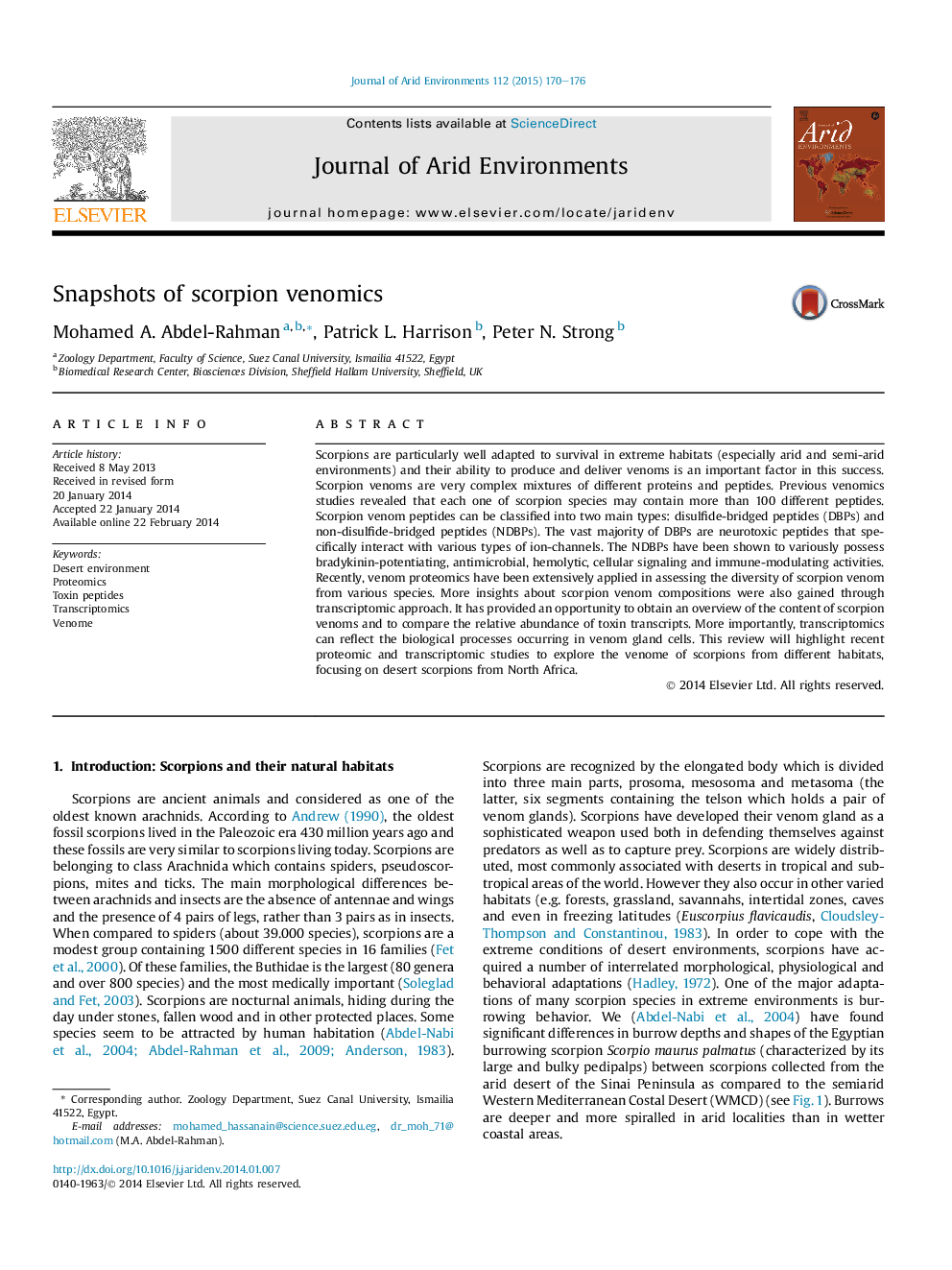| Article ID | Journal | Published Year | Pages | File Type |
|---|---|---|---|---|
| 4392955 | Journal of Arid Environments | 2015 | 7 Pages |
Abstract
Scorpions are particularly well adapted to survival in extreme habitats (especially arid and semi-arid environments) and their ability to produce and deliver venoms is an important factor in this success. Scorpion venoms are very complex mixtures of different proteins and peptides. Previous venomics studies revealed that each one of scorpion species may contain more than 100 different peptides. Scorpion venom peptides can be classified into two main types: disulfide-bridged peptides (DBPs) and non-disulfide-bridged peptides (NDBPs). The vast majority of DBPs are neurotoxic peptides that specifically interact with various types of ion-channels. The NDBPs have been shown to variously possess bradykinin-potentiating, antimicrobial, hemolytic, cellular signaling and immune-modulating activities. Recently, venom proteomics have been extensively applied in assessing the diversity of scorpion venom from various species. More insights about scorpion venom compositions were also gained through transcriptomic approach. It has provided an opportunity to obtain an overview of the content of scorpion venoms and to compare the relative abundance of toxin transcripts. More importantly, transcriptomics can reflect the biological processes occurring in venom gland cells. This review will highlight recent proteomic and transcriptomic studies to explore the venome of scorpions from different habitats, focusing on desert scorpions from North Africa.
Related Topics
Physical Sciences and Engineering
Earth and Planetary Sciences
Earth-Surface Processes
Authors
Mohamed A. Abdel-Rahman, Patrick L. Harrison, Peter N. Strong,
